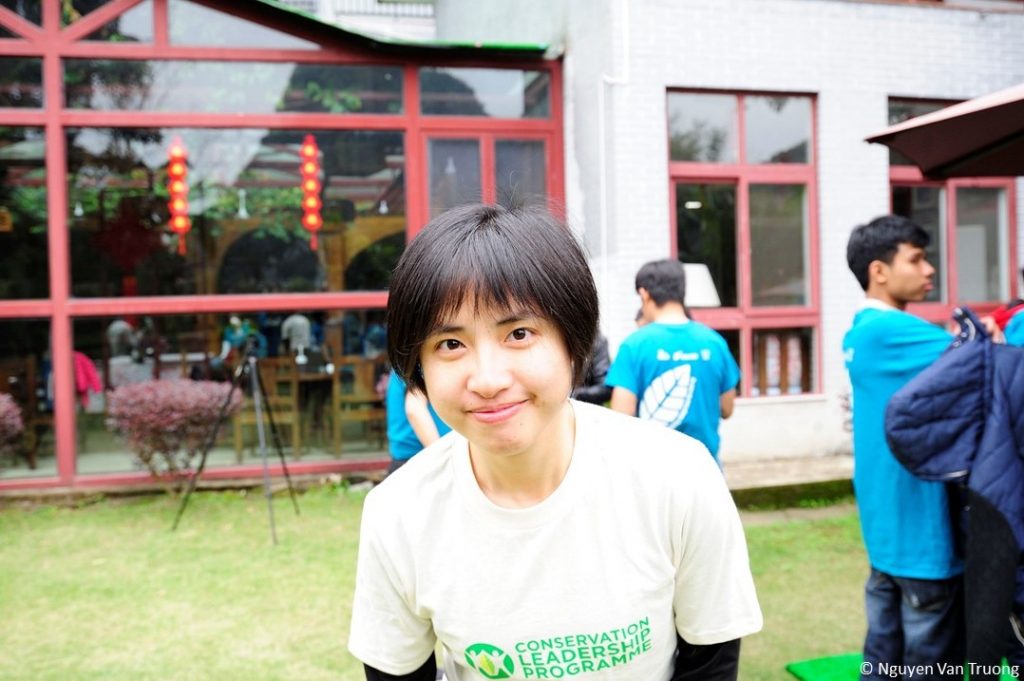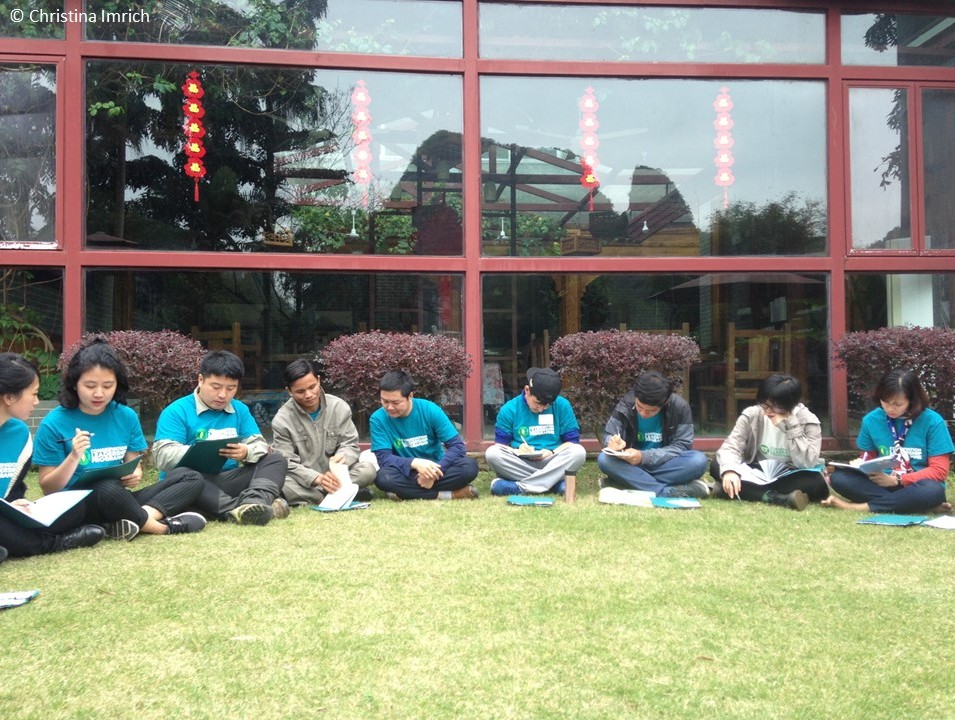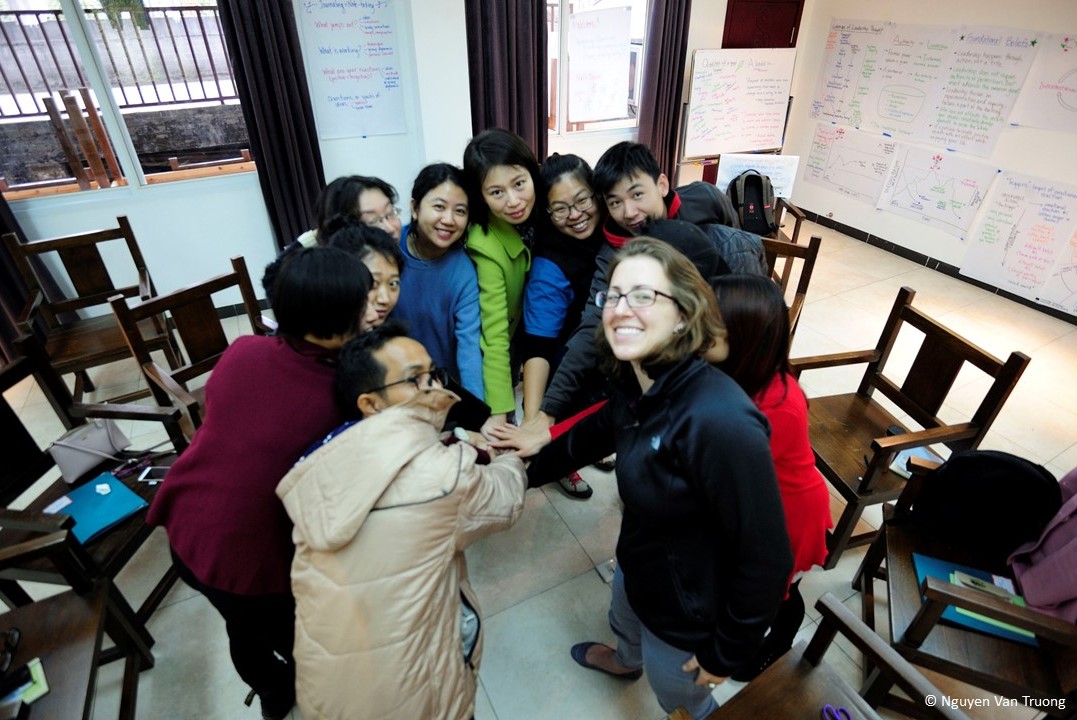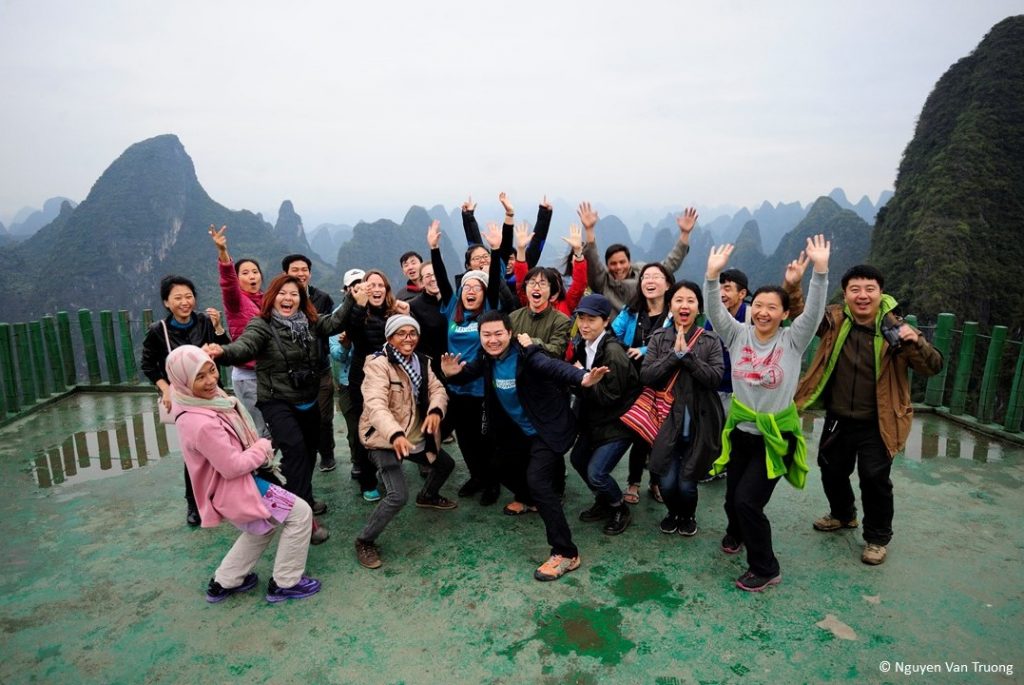From March 10-14, 2017 the Conservation Leadership Programme (CLP) ran a leadership training course for conservationists in Asia. We gathered in the misty, karst peaks of Yangshuo, China. Twenty-two participants from the Wildlife Conservation Society, BirdLife International, Fauna & Flora International, National Geographic Society, and the CLP alumni network contributed valuable experience and left with a set of tools to take more leadership action for conservation. Participants also went home with a stronger network of conservation peers. Read this blog by participant Huang Qiaowen for a taste of her experience in Yangshuo.

How time flies! Since our departure from the CLP leadership course in Yangshuo two months ago, we have gone back to our daily lives. I have returned to my fieldwork, fund-raising and communications responsibilities, and everything seems normal. But deep in my mind, something has changed as a result of my experience with CLP. I can still remember the days we spent together.
To wake up awareness of ourselves on the first day, Mo, the lead facilitator, asked us to answer two questions: “How do you feel today?” and “What are you looking forward to today?” It happened to be my 30th birthday. Red-whiskered bulbuls were singing outside, unfamiliar classmates sat around me, and I felt that it was a fresh and meaningful start for me.
I have been a conservationist with the Chinese Felid Conservation Alliance (CFCA) since April 2016, taking charge of communication and funding work. As a fresh bird in this field, I used to be unsure of myself, and question whether I was qualified enough to be a good leader. Could I be a good leader after the course?
Contrary to my expectations, Mo offered me a different perspective:
- Not everyone will be in a leadership position, but everyone is a leader;
- Leadership doesn’t come from a title, but from every single action;
- There are thousands of good leaders out there, but everyone has their own leadership style.

Mo is such a wonderful tutor with good methods and an inspiring character. Before illustrating these interesting ideas, she would raise questions first. On the very first day, she asked us to carry out a Q&A process in pairs.
I asked my partner Yanjing: “What is exciting about being a leader?” “I could organise things as I want,” she said. Now it was my turn to answer the same question. “Erm……”. I had never really thought about why I would like to be a leader, but Yanjing’s answer inspired me. “I think the power of title does interest me, the ability to make decisions, to dictate schedules, and to reduce the pressure I feel.”
We found a new partner for the next question and Mo asked loudly: “What is really exciting about being a leader?” My partner was Xiaoxi. This time, I had a clue and replied, “Exploring and working with good colleagues is the one side that’s really appealing to me.”
After everyone had a turn to answer the questions we went back to our large circle. Everyone could feel the effect of asking the same question twice. Mo explained: “The first answer you give is usually general, what most people think about. When the question is asked again you are pushed another step forward and you can come to realise what you are really interested in. The communication between partners can offer you a different way to think.”

Mo led us through another exercise to help us think about our personal leadership style. Before the course, I didn’t think there was more than one kind of leadership style.
As an introduction, we were asked to list qualities of a good leader. We quickly came to see that the ideal leader looks different to each person. Our imagination quickly covered an A3 sheet of paper with traits like: gives direction, well-organised, encouraging, idea generator, healthy, responsible, understanding, resourceful, influential, etc. Without doubt, these qualities couldn’t all be found in one person. So, what kind of qualities does each of us have? What kind of potential leadership style are we striving for?
Mo asked us a series of questions that allowed us to align ourselves with one of four leadership styles: driver, analyst/architect, relationship master and spontaneous motivator.
What the exercise explained was such a relief to me. I can be a good leader by being myself – there are strengths to my personal style and I can adapt and grow by trying different styles. We used this tool to think about the strengths and weakness in our teams. It helped us think of more constructive ways to work together.
Instead of selling us the theory, Mo always encouraged us to explore answers based on our experiences, to search for our own strengths. Sometimes in class, I would feel myself grow, like a small tree with stronger roots. Through this exercise, and others, I have come to appreciate that I can always be inspired by others’ thoughts and suggestions. The magic power of this programme came not only from Mo, but from the sharing and mutual learning process among all the participants.
Environmental protection is a complicated mission. All participants are facing similar problems about development direction, relationship management, as well as funding issues. Our common challenges and goals made sharing experiences so useful for all of us on the course.
Thank you Mo and Christina, and all of my classmates. I am 100% sure that was a perfect start for the rest of my life after 30.

Maureen ‘Mo’ Ryan of Conservation Science Partners was the lead instructor on the course. Facilitation and logistical support was provided by Christina Imrich, WCS staff. This course was made possible thanks to the generous support of the American Express Foundation.




